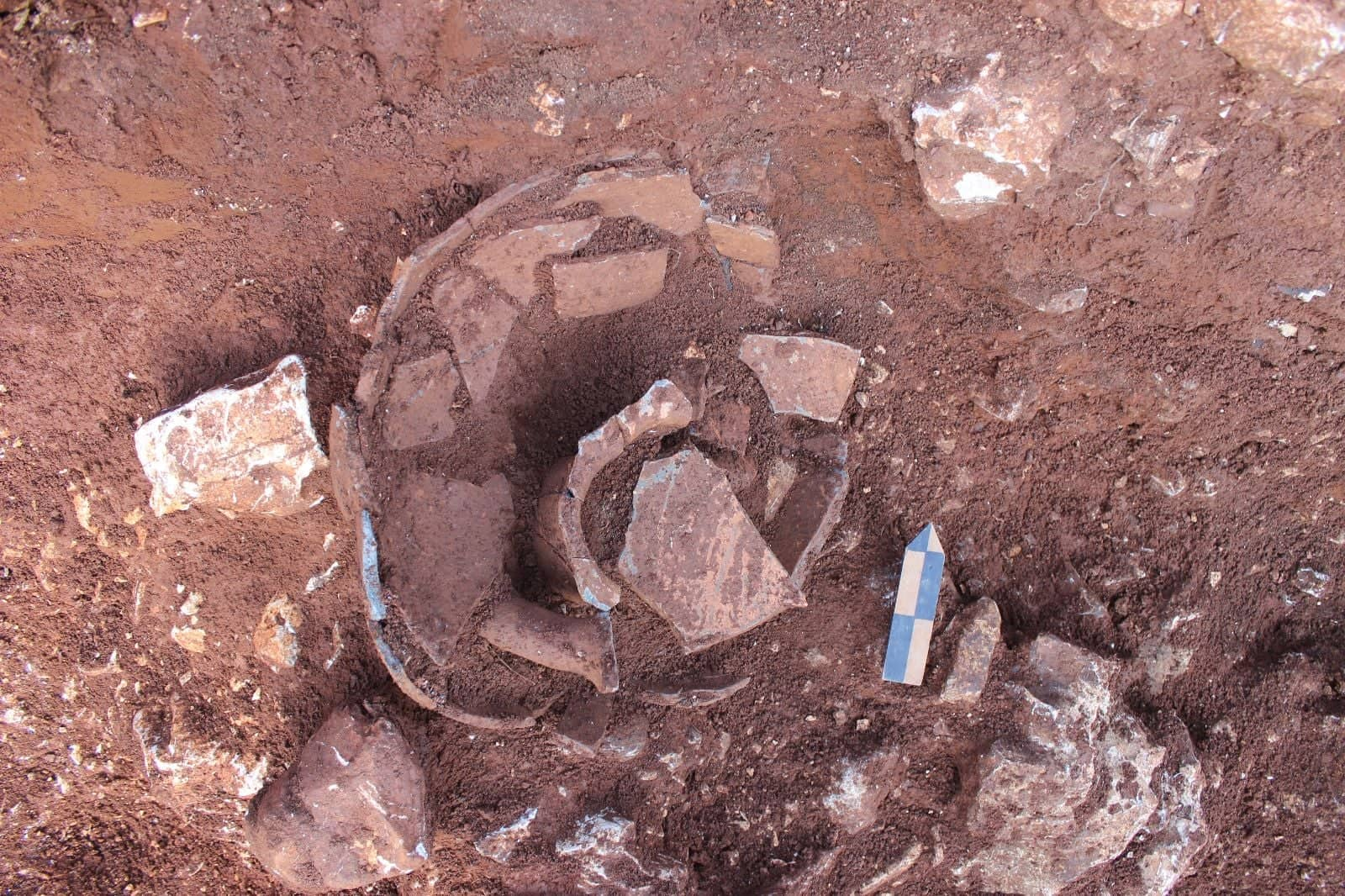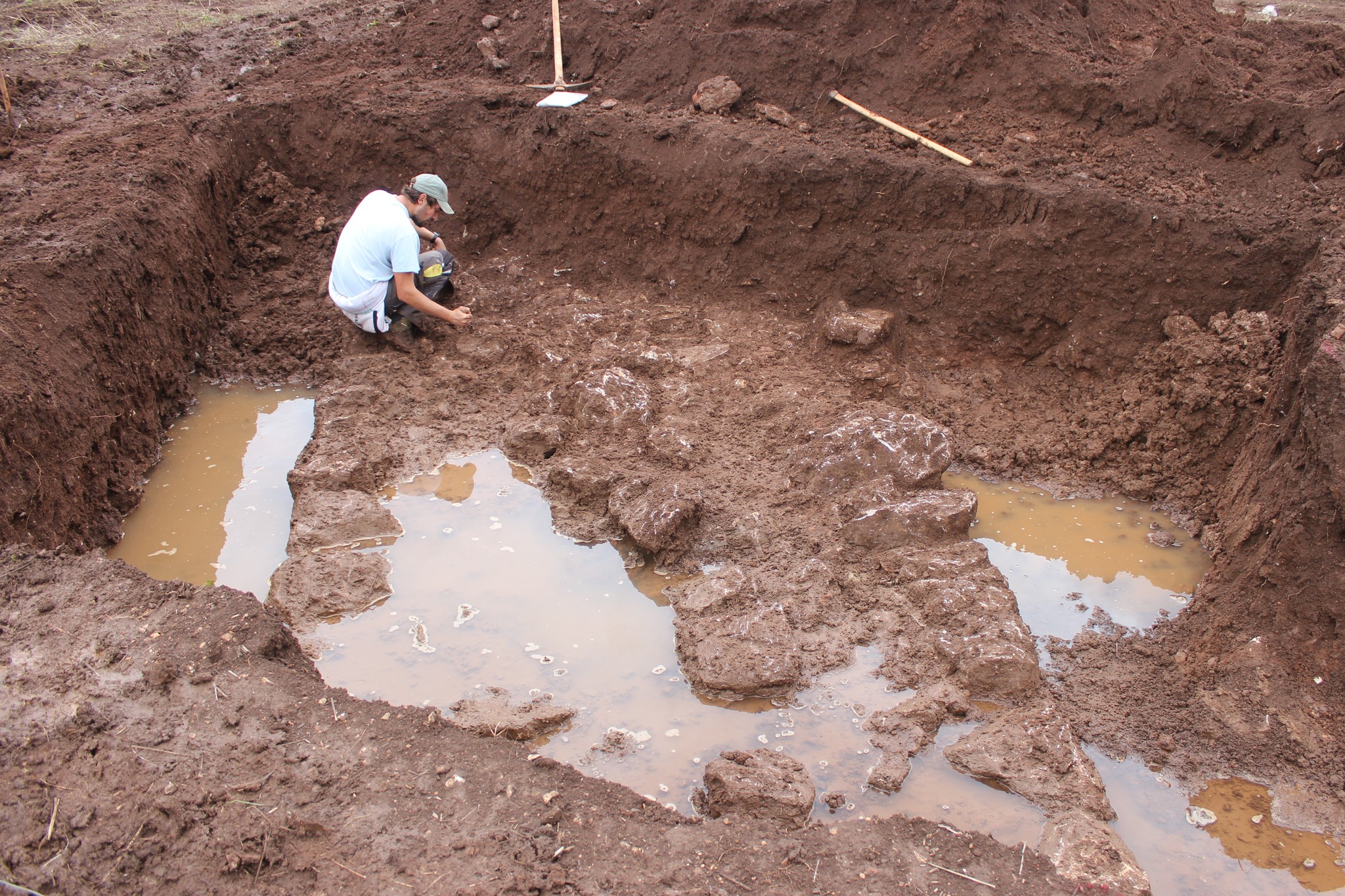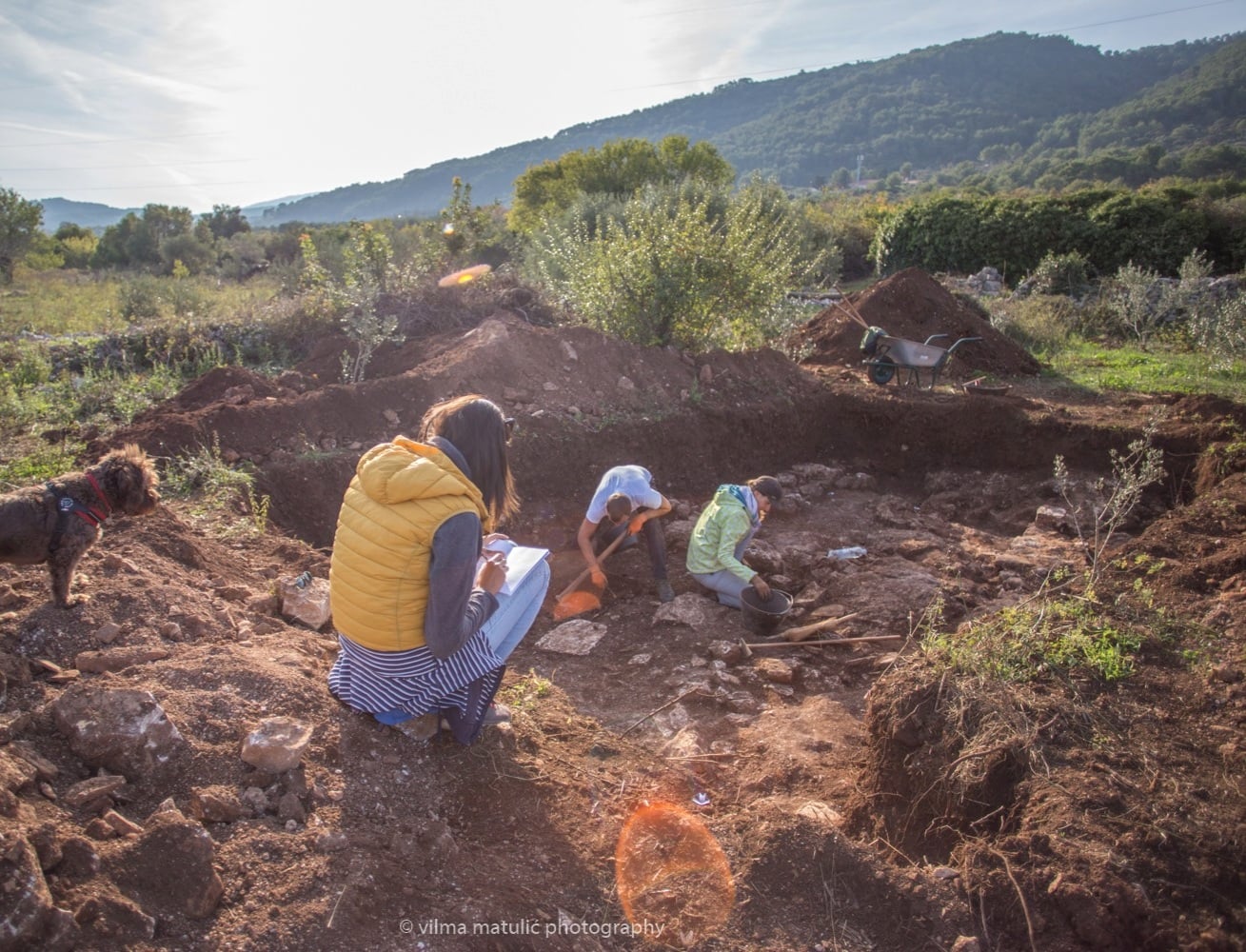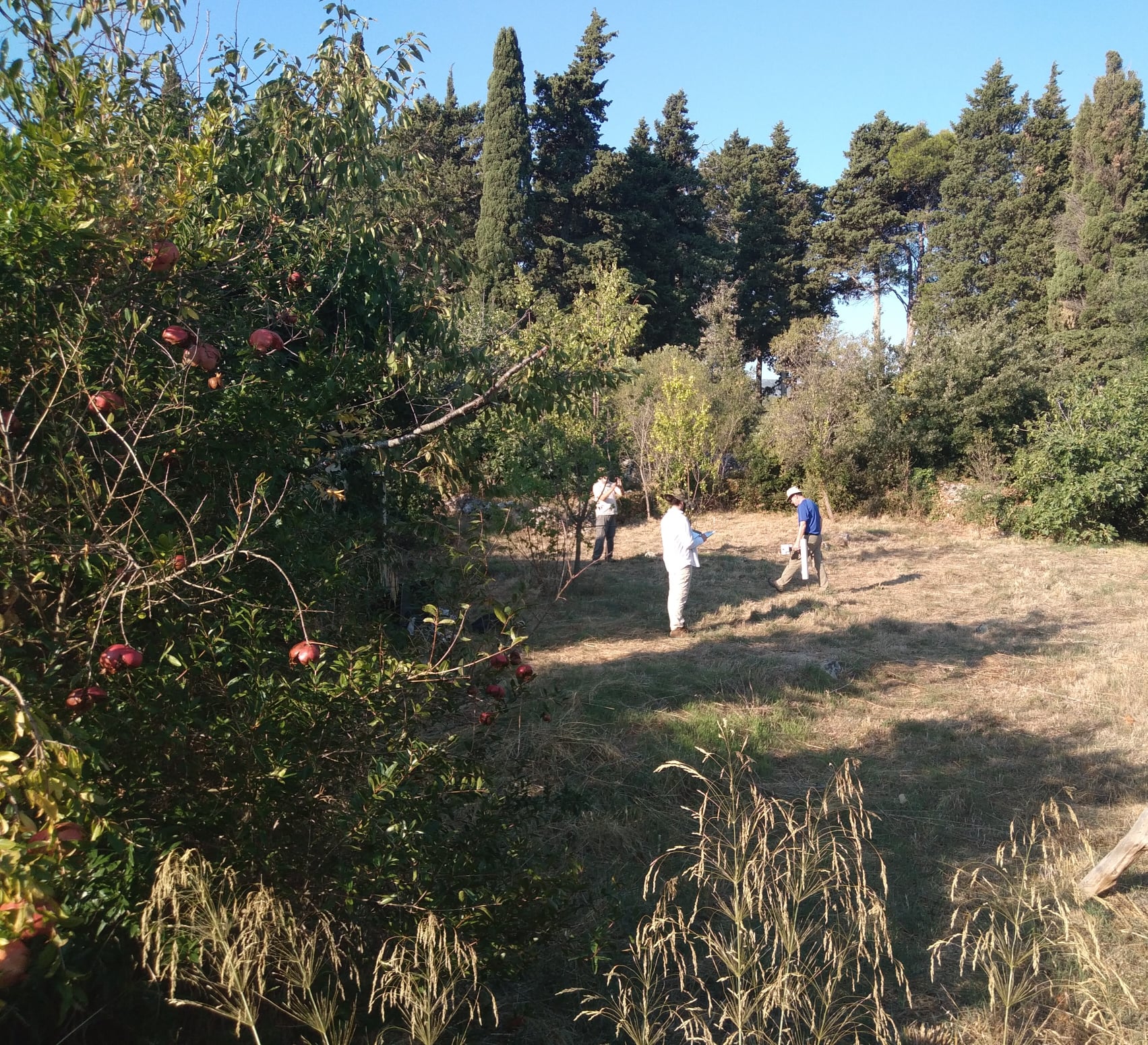Research in Stari Grad in 2023
Excavations in Tvrdalj
As part of the activities of the HRZZ AdriaCos project in 2023, the first archaeological excavations were carried out in the area of the garden of Tvrdalj of Petar Hektorović in Stari Grad on the island of Hvar. Very significant architectural remains of a multi-phase building from 4th - 3rd centuries BCE were discovered, which depict the stratification of the urban development of the wider area of the Greek city of Faros. The research was carried out in collaboration with the Institute of Archaeology, the Old Town Museum and the Conservation Department of the Ministry of Culture and Media in Split.
Excavations in the area south of ancient Pharos
Along the southwestern edge of Starigradsko polje, a Roman complex with basins was discovered, which are assumed to have had an economic and processing function. Certain finds indicate the existence of a residential part of the complex, while small movable finds speak of the activities of its inhabitants. However, the aforementioned vats cut through an earlier, monumental structure possibly connected to another segment of the Greek rampart of Pharos. Activities in this area will continue as part of the AdriaCos project next year as well.
Excavations at the Liković site
After last year's field survey, this year the first test trench was excavated at the prehistoric site Liković, on the eastern part of the island of Hvar. The research was carried out as a collaboration of the AdriaCos project and the Kantharos company from Hvar.
Research in Stari Grad in 2022
Excavations
In 2022 archaeological excavations continued in Stari Grad in the area south of ancient Pharos, where last year a grave where an iron sword-kopis and a spear were discovered The continuation of research resulted in discoveries that definitively confirm the funerary character of the area during antiquity. Trial excavations in 2022 were also focused on the area closer to the eastern rampart of the city, where traces of a monumental dry-wall architecture came to light, which can be preliminarily linked to the earliest fortification phase of Pharos dated to the 4th century BC.
Reconnaissance
The field activities of the Adriacos project in 2022 also covered the eastern part of the island, where reconnaissance of the Liković hillfort was conducted, which in the bibliography is highlighted as a potentially significant site from the period of late prehistory and protohistory.
Research in Stari Grad in 2021
Excavations
During October and November 2021, archaeological research was carried out in the area south of the ramparts of ancient Faros. Many burnt bones, ceramic fragments, glass beads and coins were found, and the discovery of an iron sword and dagger, the first finds of this type on the island of Hvar, should be highlighted. A preliminary analysis of the sword established that it belongs to the typology of Greek kopis (κοπίς), while fragments of red-figure pottery are dated to the 4th century BC. Although more details will be known after the conservation-restoration interventions and detailed scientific processing that is underway, the results of the research represent an important step forward in the context of the material culture and funerary practices of ancient Pharos.
Geophysical prospections
During September 2021, as part of the HRZZ AdriaCos project, geophysical prospection was carried out using georadar and magnetometer at a number of locations in Stari Grad, with the aim of detecting the positions of the city necropolis, sections of the city ramparts and other parts of the urban fabric of ancient Phaors. Software processing and mapping of discovered archaeological structures took place in parallel with field work. The research is carried out through the cooperation of the Institute of Archaeology, the Museum of Stari Grad and the Public Institution Agency for the Management of the Stari Grad Field with the University of Kentucky (William S. Webb museum of Anthropology, College of Arts and Sciences), USA.
Field survey with dogs for the detection of human remains
As part of the research activities of the HRZZ AdriaCos project, an archaeological field survey was conducted on the island of Hvar using human remains detection dogs (HRD). In the search for the necropolis of the Greek city of Pharos, as well as the necropolis of the local Iron Age community in the city of Hvar, the targeted areas in Stari Grad and Hvar were examined with the help of the CCK 9 team and dogs from the S.PAS center, which are successfully used as a non-invasive method in archaeological research.








